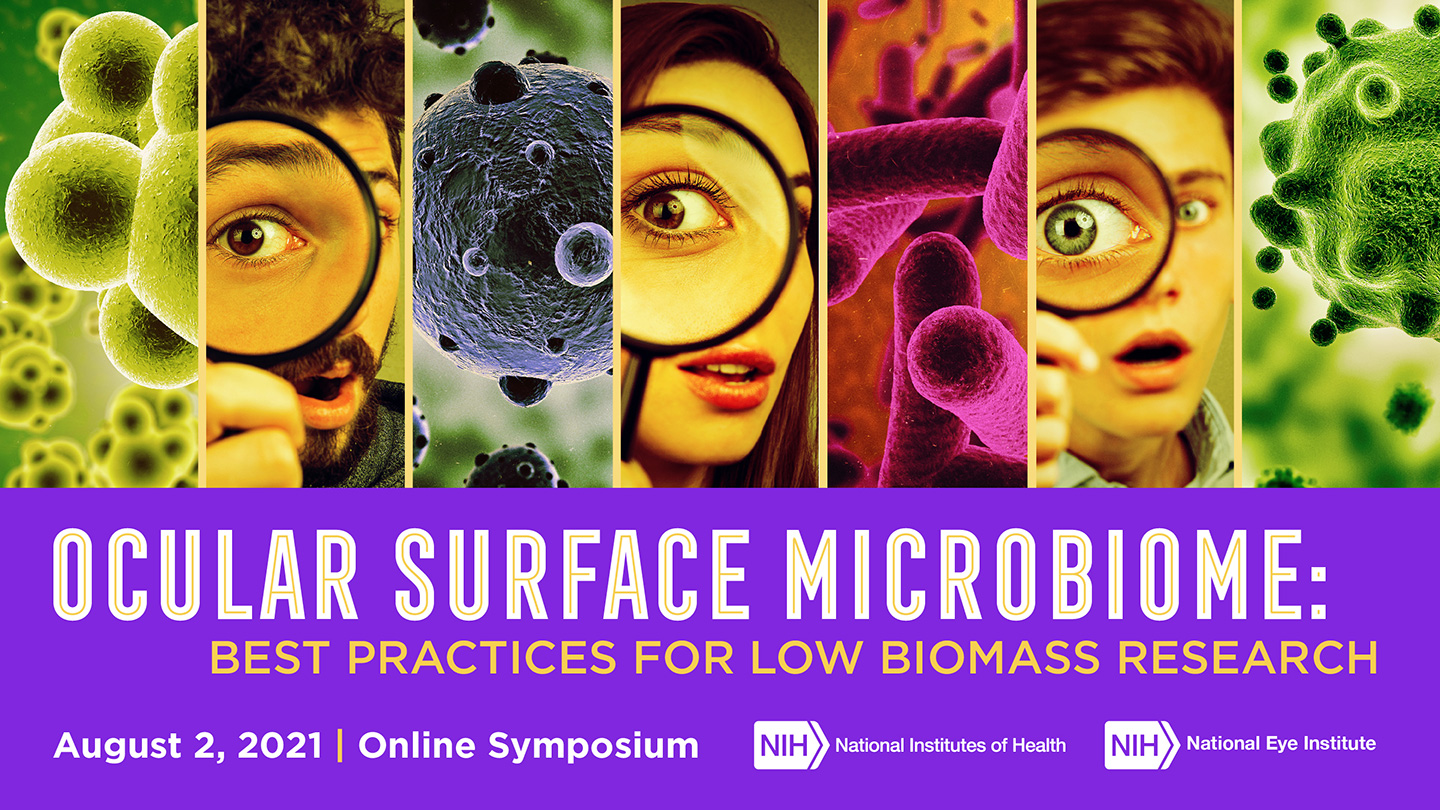Investigating the Ocular Surface Microbiome:
Best Practices for Low-Biomass Microbial Research (Online Symposium)
August 2, 2021
3:00 pm – 8:00 pm Eastern Daylight Time
12:00 pm – 5:00 pm Pacific Daylight Time
2:00 pm – 7:00 pm Central Daylight Time
5:00 am – 10:00 am Australian Eastern Standard Time
8:00 pm – 1:00 am British Summer Time
Not sure what time it is locally? Use the Time Zone Converter for local times.
AGENDA
Co-Chairs:
Russell N. Van Gelder, MD, PhD, University of Washington
Karen E. Nelson, PhD, Thermo Fisher Scientific
| Welcome by NEI Director Michael F. Chiang, MD National Eye Institute, NIH, USA |
| Opening Address Russell N. Van Gelder, MD, PhD University of Washington |
Session I: Emerging Evidence: The Case for or Against the Existence of Microbiota on the Ocular Surface and Ocular Microbial Defense Mechanisms That May Play a RolePanel Moderator: Mark Willcox, DSc, PhD, University of New South Wales, Australia Characterization of a Unique Low Biomass Niche Pathogen Detection in Low Biomass Ocular Samples Relationship Between Microbial Biofilms and the Ocular Surface Microbiome What Animal Models Tell Us About the Ocular Surface Microbiome Moderator Leads Session Speaker Discussion and Q & A Focusing on Moving the Field Forward (20 minutes) |
Session II: Lessons Learned: Experience from Studies of Other Low Biomass NichesPanel Moderator: Heidi Kong, MD, MHSc, National Institute of Arthritis and Musculoskeletal and Skin Diseases (NIAMS), NIH Skin Microbiome Shotgun Metagenomic Sequencing of Low Biomass Microbiome Samples Cautionary Tales of the Placenta Microbiome Developing Global Whole Standards for the Microbiome Field Moderator Leads Session Speaker Discussion and Q & A Focusing on Moving the Field Forward (20 minutes) |
Session III: Best Practices: How Can Ocular Surface Sample Collection and Processing Protocols Be Standardized to Minimize Artifacts and Contaminants (e.g., DNA) and Generate Reproducible Data?Panel Moderator: Joseph F. Petrosino, PhD, Baylor College of Medicine Sampling the Ocular Surface: The Call to Establish a Protocol Microbiome Datasets Are Compositional, Not a Linear Process Overcoming Challenges in Analyzing Data Obtained from Low Biomass Niches: Handling Contaminants Moderator Leads Session Speaker Discussion and Q & A Focusing on Moving the Field Forward (20 minutes) |
Session IV: Approaches to Validating MicrobesPanel Moderator: Sinem Beyhan, PhD, University of California at San Diego, and J. Craig Venter Institute A Flow-Cell Mammalian Cell Culture Model for Host-Microbe Interaction Studies Development of Corneal and Conjunctival Epithelium Cells/Organoids as a Model for Testing the Microbiome Biogeography of the Oral Microbiome Strategies for Validating the Presence of Bacteria In Vivo Using Imaging Moderator Leads Session Speaker Discussion and Q & A Focusing on Moving the Field Forward (20 minutes) |
| Meeting Wrap-up Moving Forward: Charting a Course for Rigorous Study of the Ocular Surface Microbiome Karen E. Nelson, PhD Thermo Fisher Scientific |
| Closing Remarks by Director of Division of Extramural Science Programs Michael A. Steinmetz, PhD National Eye Institute, NIH |
